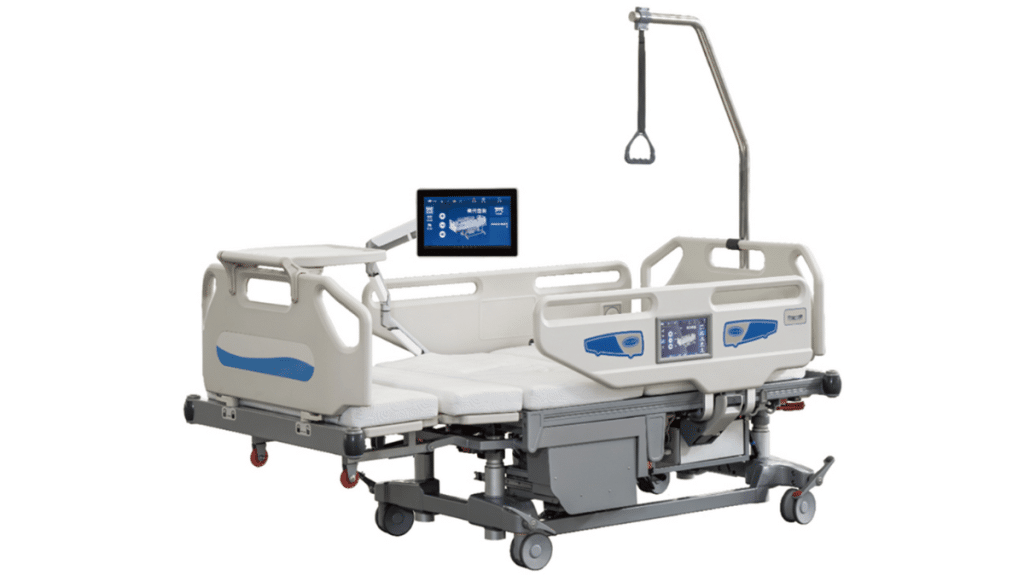When it comes to patient care, hospital beds are no longer just basic platforms with mattresses. Modern medical beds are engineered with advanced features that promote healing, reduce caregiver strain, and enhance patient comfort. One essential aspect is OEM medical bed positions, which refer to various adjustability options integrated during manufacturing. These positions allow for better mobility, support, and treatment delivery in healthcare settings.
As a trusted hospital bed manufacturer, we understand the importance of combining innovation with safety. In this article, we’ll walk you through the most common medical bed positions available through OEM designs, and how they contribute to a better patient experience.
What Does “OEM Medical Bed Positions” Mean?
OEM stands for “Original Equipment Manufacturer.” When it comes to hospital beds, OEM medical bed positions refer to the factory-built settings and movement mechanisms that allow the bed to adjust in specific ways. These positions are designed during the production phase and are tailored to suit hospitals, rehabilitation centers, and home care environments.
Because these features are part of the original design, they are often more durable, reliable, and aligned with medical standards than aftermarket modifications.
Key Hospital Bed Positions Offered by OEM Manufacturers
Here are the most common OEM-configured positions available in quality medical beds:
1. Fowler Position
This is the most common position in hospital beds. The head of the bed is elevated between 45 to 60 degrees, which helps in:
- Supporting breathing
- Comfort for eating and reading
- Post-operative recovery
2. Semi-Fowler Position
Here, the head is raised to about 30 degrees. It’s ideal for:
- Reducing pressure on the lower back
- Patients with respiratory issues
- General comfort without full upright positioning
3. Trendelenburg Position
In this position, the patient’s head is lower than the feet. It’s typically used for:
- Emergency situations like shock
- Improved circulation
- Surgical procedures
4. Reverse Trendelenburg
Opposite to the Trendelenburg, this position elevates the head above the feet. Common benefits include:
- Reducing pressure on the head and neck
- Improving respiratory function
- Post-surgical recovery for abdominal procedures
5. Flat Position
This is the default horizontal setting. It’s essential for:
- Sleeping
- Spinal alignment
- Transporting patients
Why OEM Bed Position Features Matter
As a reputable hospital bed manufacturer, we know that every movement matters when it comes to patient recovery. OEM medical bed positions are designed with precision to:
- Reduce caregiver injuries by minimizing manual lifting
- Allow for consistent, smooth adjustments using electric or hydraulic controls
- Comply with global healthcare standards for safety and hygiene
Additionally, hospitals can request custom bed positions depending on the nature of care. OEMs offer flexibility for features like synchronized leg elevation, memory presets, or special bariatric positions.
Benefits of Choosing a Trusted Hospital Bed Manufacturer
Not all hospital beds are created equal. When you partner with a certified hospital bed manufacturer, you get:
- High-quality motors and actuators for bed movement
- Anti-bacterial coated surfaces
- Easy-to-clean materials for infection control
- Tested weight capacities for safety
Additionally, a manufacturer with OEM capability can provide customized models that meet your healthcare facility’s exact requirements.
Applications of Medical Bed Positions in Real Healthcare Settings
The utility of OEM bed positions goes far beyond patient comfort. In modern hospitals, caregivers rely on automated positions to:
- Transfer patients with mobility challenges
- Reduce the risk of bedsores by frequent repositioning
- Assist in physical therapy and rehabilitation exercises
- Create better access for IV lines, feeding tubes, or wound care
Final Thoughts
Investing in hospital beds with factory-built, high-functionality positions is not just about comfort—it’s about improving outcomes. As a dedicated hospital bed manufacturer, we take pride in designing and producing beds that meet global medical needs with a focus on innovation, reliability, and long-term performance.
Understanding OEM medical bed positions helps decision-makers select the right features for their hospital or clinic, ensuring both patient satisfaction and operational efficiency. Whether you’re upgrading existing units or furnishing a new facility, partnering with an experienced OEM partner makes all the difference.
